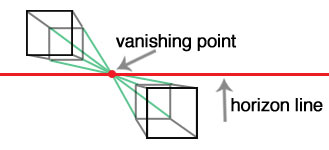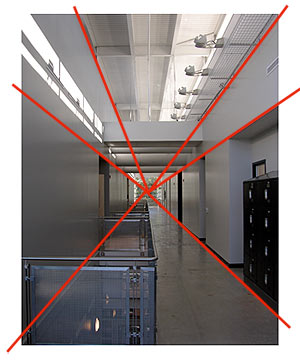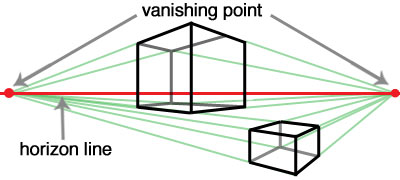Linear Perspective
Linear perspective is a mathematical system for creating apparent depth and volume on a surface. Linear perspective has several aspects:
- Forms diminish in scale as they recede into the distance.
- The point at which all forms completely disappear (are too small to see) is called a vanishing point.
- In basic linear perspective (one-point and two-point perspective), the vanishing points are positioned at eye level, referred to as the horizon line.
- A fixed viewing point is required.
One-point perspective requires a single vanishing point on the horizon line to which all lines receding into space converge. If a cube is depicted, the viewer will face a flat plane of the cube. Two-point perspective requires two vanishing points on the horizon line. If a cube is depicted, the viewer will face an edge of the cube. Three-point perspective requires three vanishing points - usually two of the vanishing points are on the horizon line and a third is above or below the horizon line.

One-point perspective

One-point perspective

Two-point perspective

Two-point perspective.

(In many cases, the vanishing points of 2+ point perspective will not be within the picture format.)